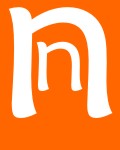
Burn Prairie Burn!
Videos of prescribed burning for prairie management.
By Doug Collicutt
In the lead-up to the 2012 North American Prairie Conference, held in Winnipeg, Manitoba, there was lots of prairie-burning going on! So, I thought I would take the opportunity to film some of the prescribed burns to show the process and its beneficial effects on native prairie, and to demonstrate that fire can be used safely, even in urban settings.
Native prairies, especially tall grass prairies, benefit greatly from being burned periodically. Fire removes old dead plants (thatch), recycles nutrients and curbs invasion by woody plants. Prior to European settlement of the North American Great Plains the combination of fire, drought and grazing kept the grasslands as grasslands. The tall grass prairies in particular would have been largely swallowed up by woody vegetation (forests) if fire and grazing by bison and other large herbivores had not been in effect. Aboriginal peoples knew the benefits of fire and regularly set the prairies ablaze to improve grazing and attract bison to specific areas for better hunting.
With the coming of European settlers, first came the large scale removal of the native prairies and their conversion to crop fields. Then, with the loss of natural grazers and fire suppression by humans, remaining patches of native prairie grew decadent and many were lost to the advances of woody vegetation, most notably Trembling Aspen (Populus tremuloides).
As the movement to preserve and manage remaining native prairies developed in the latter part of the 20th century, the role of fire in keeping prairies healthy began to be recognized. Now, in the 21st century, fire is seen as a vital tool in the management of remnant prairies. Prescribed burning is more widely accepted and even welcomed, even in urban areas, as more people come to understand the important role fire plays in the prairie ecosystem.
The 2012 North American Prairie Conference offered a chance to showcase southern Manitoba's prairies. Local prairie enthusiasts were eager to show them off at their best, so a number were burned in spring 2012, in keeping with overall management regimes, of course, but also so they would be at their best for tours related to the conference.
So have a look at the videos below. I hope you'll take note of the care and preparations that go into conducting these burns and the lush growth of the prairies that results in the following months.
But first, some definitions:
- Prescribed burn
- A planned burning of a grassland site or section thereof as part of a prescribed habitat management plan.
- Fire break
- A physical barrier of some sort to the advancement of a fire. This may be a region of no fuel (tilled earth), one with little fuel remaining (mown close to the ground), wetted or foamed fuel, or an already burned site.
- Back burn
- A fire moving into the wind, usually used to create fire breaks prior to starting a head fire, but sometimes used to burn entire sites slowly.
- Head fire
- A fire moving with the wind, usually moving rapidly and generating intense flames.
- Spring burn
- Most prescribed burning is carried out in spring, often before any new growth occurs, allowing for earlier warming of the ground through increased insolation.
"Burn Prairie Burn" Videos: (**2019 Update - YouTube has lost the captions that were installed on these videos. We are working to correct this issue. The included text captions will be replaced shortly, we hope!**)
Living Prairie Museum Prescribed Burn
Grosse Isle Prairie Prescribed Burn
Stonewall's Ruby Roe Tall Grass Prairie Preserve Prescribed Burn
I hope you enjoyed these videos and can appreciate the role that fire plays in preserving and managing our remaining native prairies, as well as the care and professionalism that goes into conducting prescribed burns safely.
Bye for now.
| You can help NatureNorth produce more great articles with a secure donation through PayPal. Our Google Adsense ads pay our server costs, but that's about it. To learn more follow this link: Support NatureNorth. Thank-you! | |
Return to: Summer Issue | NatureNorth Front page
